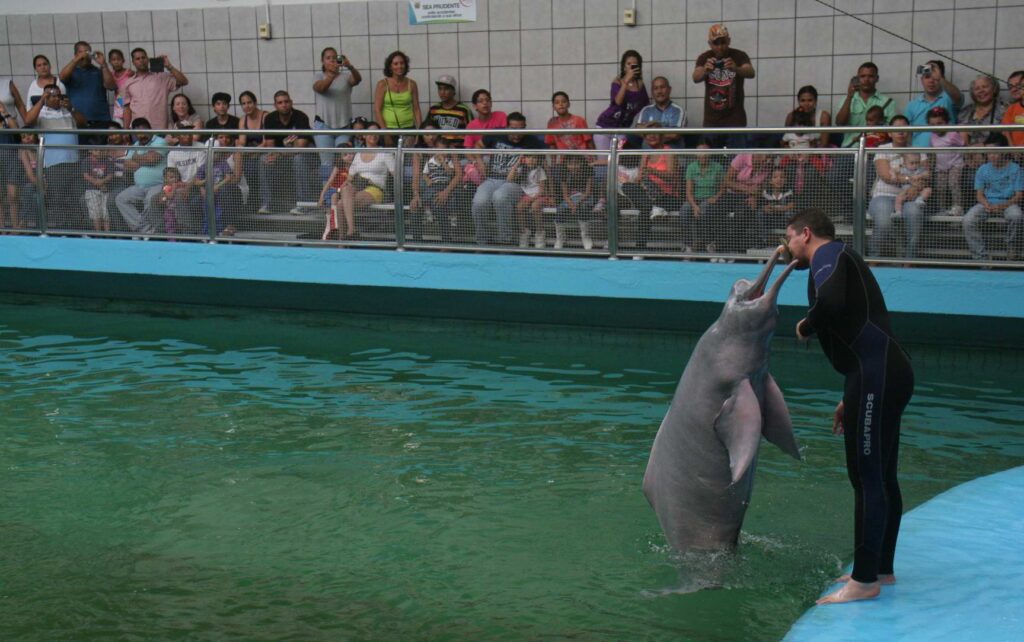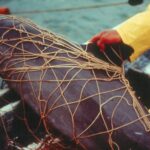Dolphins are among the most intelligent and social animals in the world. In their natural habitats, they thrive in complex family groups, communicate through unique vocalizations, and travel vast distances every day. Yet, despite their remarkable qualities, thousands of dolphins live in captivity, where their freedom and natural behaviors are severely restricted. The growing fight against dolphin captivity highlights why these animals belong in the wild and the ethical concerns surrounding marine mammal entertainment.
Why Captivity Harms Dolphins
1. Limited Space
In the wild, dolphins swim up to 100 kilometers per day, diving deep into the ocean and exploring vast territories. In captivity, they are confined to small tanks or enclosures, which are mere fractions of the size of their natural habitats. This restriction often leads to physical health issues, such as weakened muscles and damaged skin from constant exposure to artificial water conditions.
2. Psychological Distress
Dolphins are highly intelligent and emotional creatures. In captivity, they are separated from their family pods and forced into unnatural groupings. This isolation and lack of stimulation often result in stress, depression, and repetitive behaviors like swimming in circles or banging their heads against tank walls—a condition known as “zoochosis.”
3. Shortened Lifespans
While proponents of captivity argue that dolphins live longer under human care, research suggests otherwise. Captive dolphins often suffer from stress-related illnesses, infections, and injuries, leading to shorter lifespans compared to their wild counterparts.
The Captive Dolphin Industry
1. Dolphin Shows and Swim-With-Dolphins Programs
Dolphins in marine parks and resorts are trained to perform tricks or interact with visitors. These activities may seem harmless, but the training methods often involve food deprivation and other coercive techniques. Additionally, constant human interaction can be stressful for the animals, disrupting their natural behaviors.
2. The Capture Process
Many captive dolphins are taken from the wild, despite international agreements banning the practice in some regions. The capture process is traumatic, often involving the separation of young dolphins from their pods. Entire groups may be killed during these captures, with only a few selected for captivity.
3. Breeding in Captivity
To sustain the industry, many facilities rely on captive breeding programs. However, breeding dolphins in captivity perpetuates their suffering and creates more animals that will never experience the freedom of the ocean.
The Global Movement Against Captivity
1. Changing Public Perception
Awareness campaigns and documentaries, such as The Cove and Blackfish, have played a significant role in exposing the dark side of marine mammal captivity. These films highlight the suffering of captive dolphins and orcas, urging the public to reconsider their support for marine parks.
2. Legislative Action
Several countries, including Canada, India, and Costa Rica, have banned dolphin captivity or restricted their use in entertainment. These laws reflect a growing recognition of the ethical issues involved in keeping dolphins in captivity.
3. The Rise of Sanctuaries
Marine sanctuaries offer a humane alternative for retired captive dolphins. These enclosed, ocean-based environments provide more space and a natural setting while still allowing for human care when needed. The development of such sanctuaries marks a significant step toward ending dolphin captivity.
Why Dolphins Belong in the Wild
Dolphins evolved to live in dynamic ocean environments, where they hunt, play, and socialize freely. Captivity strips them of these essential experiences, reducing them to mere spectacles for human entertainment. By protecting wild dolphin populations and supporting ethical alternatives to captivity, we can ensure a future where these magnificent creatures thrive in their natural habitats.
What You Can Do to Help
- Avoid Supporting Marine Parks: Choose to visit dolphin-watching tours or marine sanctuaries instead of facilities that exploit captive dolphins.
- Educate Others: Share information about the harms of dolphin captivity to raise awareness among friends and family.
- Support Conservation Efforts: Donate to organizations working to protect dolphins in the wild and advocate for stronger laws against captivity.
Conclusion
The fight against dolphin captivity is rooted in a fundamental understanding: dolphins are sentient beings with a right to live freely in their natural environment. As awareness grows, so does the hope for a world where dolphins are no longer confined to tanks but instead roam the oceans as nature intended.


